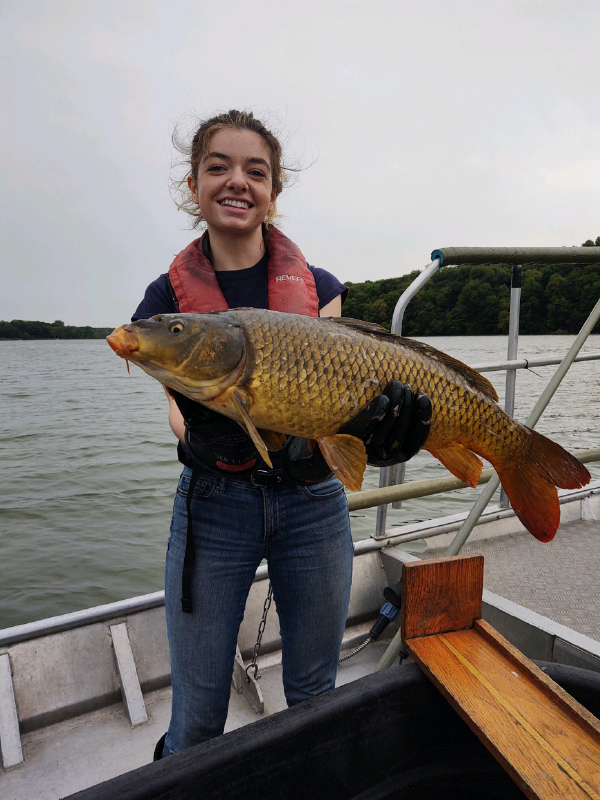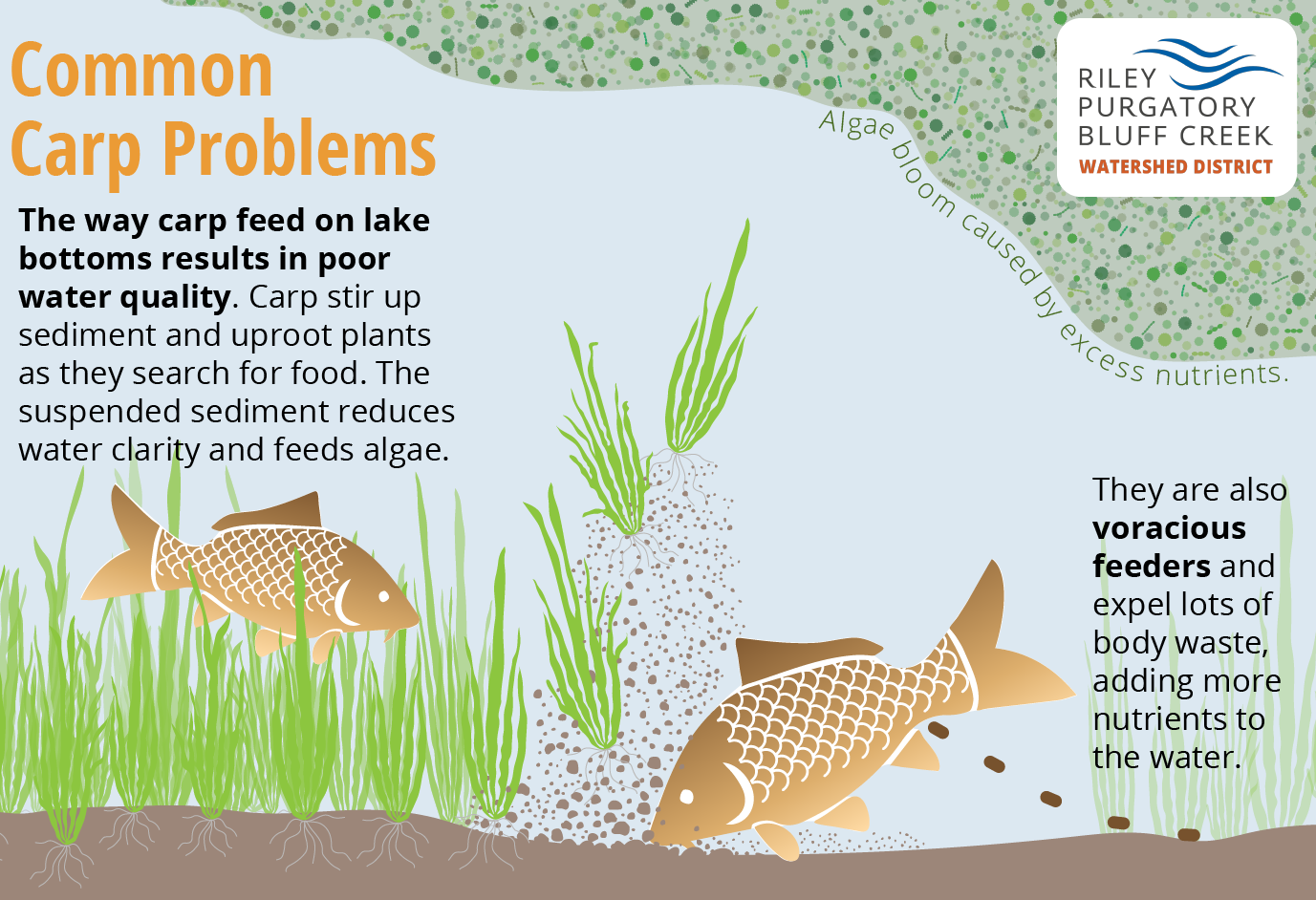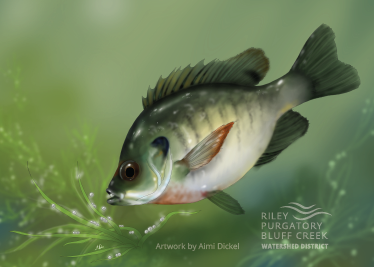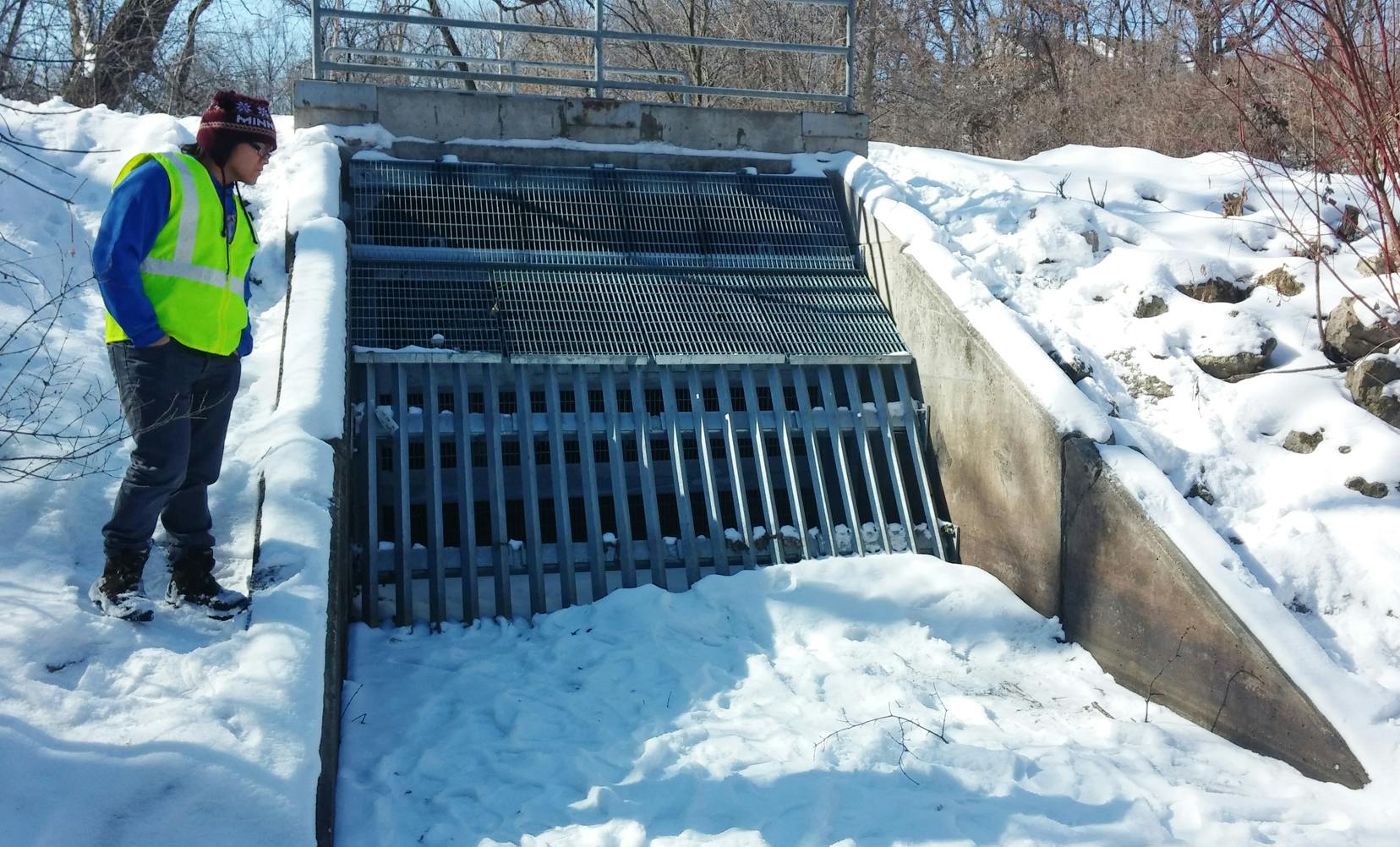Carp

Common Carp Management
RPBCWD, in cooperation with the University of Minnesota (UMN), has led the development in Minnesota of a successful integrated pest management (IPM) strategy for Common Carp (Cyprinus carpio) in lakes. Since 2008, the District has used considerable resources to add to the base of knowledge and understanding of common carp management that is now being used across the state by numerous organizations. Following the completion of the Riley Chain of Lakes (RCL) Carp Management Plan drafted by the UMN in 2014 (Bajer et al., 2014), and the Purgatory Creek Carp Management Plan drafted in 2015 (Sorensen et al., 2015), the district took over carp monitoring and removal duties from UMN.
What's the Problem with Carp?
Common carp are among the world’s most widespread invasive fish. They were introduced to North America in the late 1800s and are now widely distributed. Carp are often called "ecological engineers" because of their ability to modify the habitat and aquatic communites of lakes they invade.

Carp can have a lot of babies - a single female can produce over 1 million eggs each year! Carp also grow quickly, reaching 4 to 6 inches in length by the end of their first year. This quick growth limits the amount of time that young carp can be preyed upon by native fish such as bluegill and bass.
Common carp occur in most lakes in central and southern Minnesota and are especially successful in the nutrient-rich lakes of the Twin Cities metro area. In these lakes, carp populations commonly reach 300-500 kilograms/hectare (600-1,000 pounds/hectare), which substantially exceeds the ecological threshold of 100 kilograms/hectare (220 pounds/hectare). Above this threshold, carp cause significant damage to lake ecosystems. Not only do they excrete waste which adds nutrients to the lake, but their feeding behavior of rooting around on the lake bottom re-suspends nutrient-rich sediment ino the water column. Both lead to reduced water clarity and increased risk of algae blooms. While feeding, carp also uproot aquatic plants, destroying habitat for native species and making lake sediments more susceptible to wind or boat prop mixing.

Carp Life Cycle and Monitoring
RPBCWD common carp management is based on strategies that exploit the common carp life cycle and behaviors. Management also takes into account that carp utilize different lakes in RPBCWD at different times of year.
In winter, carp seek refuge in deep lakes that are less susceptible to winterkill (oxygen depletion to the point of fish death). In late winter, they often gather in large groups under the ice. In the Riley Creek Chain of Lakes (RCL), both Lake Riley and Lake Susan provide winter refuges. In the Purgatory Creek Chain of Lakes (PCL), carp typically overwinter in Staring Lake.

In spring, carp use creeks to migrate to shallow “nursery lakes” for reproduction where a female lays eggs for fertilization by a male. About the size of a grain of salt, a carp egg provides a tasty meal for native fish such as bluegill. If a nursery lake has a winterkill, most native fish don't survive, there's little predation on carp eggs, and lots of baby carp hatch and grow into adults.
A UMN research study showed that, in the RCL, 10-40% of carp migrate from Lake Susan and Lake Riley to spawn in Rice Marsh Lake. In the PCL, 90% of carp left Staring Lake and migrated to the lower wetland of Purgatory Creek Recreational Area to spawn.
Generally, the spring spawning migration occurs over 1 to 3 days in April or May, when water temperatures are above 10° C (50° F) and a rain event occurs. After spawning in the nursery lakes, most adult carp return to their home (overwintering) lakes within a month. The young-of-the-year (YOY) carp typically live in the nursery lakes for two years before joining the adults in the home lakes.

RPBCWD staff monitor adult carp by electrofishing, which temporarily stuns fish so they rise to the lake surface and can be netted. Each lake is visited three times between late July and early October, and each visit consists of three 20-minute electrofishing transects totaling three hours per lake per year. Any carp captured are measured for length and weight and then euthanized. The carp population in a lake system is considered harmful and in need of management if the total biomass estimate for carp is above 100 kilograms/hectare.
Staff monitor young carp by conducting 24-hour small mesh trap net sets from August through September. Each sampling event consists of five nets per lake. Capture of young carp during this sampling suggests successful recruitment has occurred and monitoring efforts should be increased, or further management actions are needed.
Carp Control Methods
Fish Migration Barriers

- One adjustable fish barrier on Purgatory Creek between the Purgatory Creek Recreation Area wetland (nursery lake) and Staring Lake (overwintering/home lake):
- Technique 1: Allow carp to migrate into the Recreation Area wetland for spawning and close the fish barrier to trap them in the wetland for the rest of the year. With a high chance of winterkill in the wetland, the carp will hopefully not survive winter.
- Technique 2: Time use of the fish barrier to prevent carp from migrating into the Recreation Area wetland and force them to stay in Staring Lake. Because of increased predation on carp eggs by bluegill, carp reproduction will have limited success.
- Technique 3: Remove carp during spring spawning migration when fish congregate at the closed fish barrier and at the berm separating the upper and lower Recreation Area. Staff use a block net and backpack electrofishing to capture and remove carp.
- Two permanent barriers exist on the creeks downstream of Lake Riley and Staring Lake: These barriers prevent carp from moving into the RCL and PCL from the Minnesota River.
- Overflow outlet structure on Lotus Lake and Silver Lake: These structures prevent carp from using Purgatory Creek to migrate into these lakes.
Winterkill Prevention/Response

- A winter aeration unit is installed on Rice Marsh Lake (by RPBCWD) and Lake Susan (by City of Chanhassen) to reduce the risk and severity of winterkill for bluegill and other native fish. The native fish feed on carp eggs and fry (newly hatched carp), reducing the level of carp recruitment.
- After a winterkill event, bluegill sunfish are stocked in lakes. Bluegill help keep carp populations in check by consuming carp eggs and fry. The table below shows the bluegill stocking efforts over the last few years.
Table showing bluegill stocking numbers over last several years.
| Waterbody Name | 2019 | 2021 | 2023 | 2024 |
|---|---|---|---|---|
| Rice Marsh Lake | 300 | 800 | 300 | 150 |
| Staring Lake | 200 | 29* | 300/28* | 300 |
| Purgatory Creek Recreation Area - Upper wetland | 100 | 100 | 50 | 0 |
| Purgatory Creek Recreation Area - Lower wetland | 100 | 100 | 50 | 50 |
| Lake Lucy | 300 | 0 | 0 | 150 |
| Duck Lake | 0 | 18* | 20* | 0 |
| TOTAL | 1,000 | 1,047 | 1,048 | 650 |
Note: Numbers with an asterisk (*) denote stocking by the DNR.
Telemetry Guided Winter Seining

- Method is used infrequently and only when warranted.
- Approach is to capture 10-20 adult carp during the openwater period, implant radio tags into their bodies, and track the tagged fish in January-March with radio telemetry to determine where they are gathering under the ice.
- A commerical fish harvesting company is used to net the gathered carp for removal.
Publications related to RPBCWD carp management
Different Migratory Strategies of Invasive Common Carp and Native Northern Pike in the American Midwest Suggest an Opportunity for Selective Management Strategies. Chizinski et. al. North American Journal of Fisheries Management 36:769-779. 2016.Development and Implementation of a Sustainable Strategy to Control Common Carp in the Riley Creek Chain of Lakes. Bajer et. al. University of Minnesota. 2014.Development and Implementation of a Sustainable Strategy to Control Common Carp in the Purgatory Creek Chain of Lakes: Final Report to Managers. Sorensen, et. al. University of Minnesota. 2015.
